Writing Fiction: Visual Storytelling—Turning a Novel Into a Screenplay
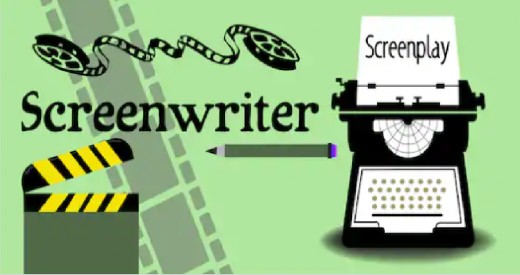
What does it take to turn a novel into a movie? What are some of the key considerations that a screenwriter must keep in mind, that the writer of a novel might not have to be as concerned about?
In 2004, I was asked if I would be interested in turning an unpublished novel into a screenplay. At that time, I had been a marketing communications professional for many years. I’d even written books, TV and radio commercial scripts, radio plays, and stage plays, but I had never written a screenplay. Still, I accepted the challenge. I had to sign a “Confidentiality Agreement,” that still applies, so even though it precludes me from discussing the screenplay that I wrote (which is "timeless" and which I think turned out great!), I am free to talk about how I wrote it.
Knowing that I knew absolutely nothing about turning a novel into a screenplay, and nothing about writing a screenplay, after reading the novel (which I loved!), I realized I was going to need some expert advice if I was going to do justice to the author's creative masterpiece. So, to the Internet I went, and there I found the resume of a consultant who lived in southern California. I was living in Orange County, California, at the time, so, I was happy to find this man. He was someone who had very impressive movie and television credits, as well as other professional credentials. Not only had he worked on a project with Oprah Winfrey (on the film, “The Women of Brewster Place”), at the time he was the Hearst Professor of Film at Pepperdine University. His credentials were impressive, so I hired Paul W. Cooper (at very reasonable rates, I might add), the "Hollywood Working Writer and Script Consultant," to help me learn what I needed to know to write the screenplay.

The "Hollywood Working Writer"
The title above belongs to Mr. Paul W. Cooper, a man who has won all kinds of awards and accolades for his work (including Emmy awards). As someone with "stellar" writing credentials, Mr. Copper does not need any compliments from me, and I hope he doesn't mind me saying here on Hub Pages that I thoroughly enjoyed working with and learning from him, way back in the early 2000's. I hired the "Hollywood Working Writer" to read a script I was hired to write, and he read everything I sent to him and always offered comments, advice, and suggestions in a timely, professional, effective, and caring manner. In fact, he helped me turn material I had no clue what to do with, into a riveting screenplay that I am still hoping will one day become a blockbuster of a movie. Because of the Confidentiality Agreement I signed, I am precluded from speaking about the screenplay, but I can say I thoroughly enjoyed working on it with Paul W. Cooper.
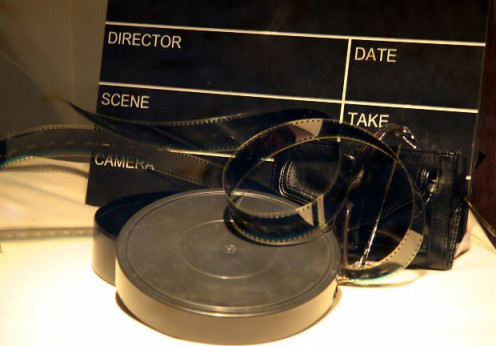
Turning a Novel Into a Screenplay
After months of dedicated and tedious work and study, a "film adaptation" was the end product of my journey to discovering what it takes to write a screenplay. "Adapting" something to film is the process of transferring a written work, in whole or in part, to a feature film (a full-length film/movie). In my case, I transferred an unpublished novel into a full-length film.
Although writing a screenplay requires a depth of knowledge about many different things, in this Hub it is my goal, primarily, to look closely at five key considerations for adapting a novel to film:
- Audience (film vs. novel)
- Visual potency of the novel
- Variety or number of visual elements contained in the novel
- Interesting and "real" main characters
- Where/how the movie begins
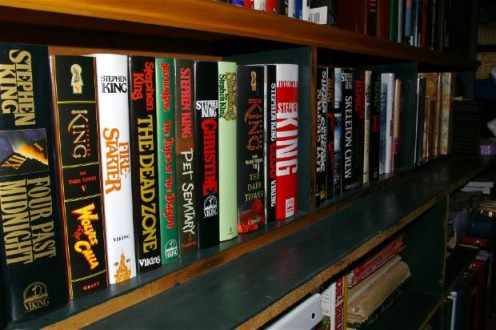
Motion Picture Images vs. The Written Word
When you are turning a novel into a screenplay, you must consider which visual images will provide the sensory details to help viewers process, quickly, what they see. When you look at a person, for example, you immediately begin gathering information through sight, sound, hearing, smell, touch, and so on. You see a visual image that usually tells you, directly—whether they are male/female, tall/short/in-between, and whether they are clothed or unclothed. You can also see the color of their skin, eyes, hair, and clothing, and you can detect movements that let you know the person you're looking at is alive. If you shake hands, you can feel the texture of their skin, and if they speak, you can hear how their voice sounds. If they're wearing perfume or cologne, and if you stand close enough, you can get a whiff of it, or a nose full if they're wearing too much!
A novel, on the other hand, must use words to relate everything I just described. Nothing is immediately evident: Not how a person looks, nor any visual information that might provide clues to us about who they are. The novel can only deliver this information indirectly based on what the writer (or story narrator) tells us. That means what we're allowed to see is second-hand information. It is processed and given to us through someone else. It is sifted through the eyes of the beholder, so to speak. The description of something that happened to a girl while she was attending a high school dance, for example, will be different based on whether the story is told by the girl, by her best friend, her date, her teacher, or her mother. But when film becomes the narrator, viewers are shown the story from the point of view that the filmmaker decides to use.
Adapting a novel to film, I believe, should be about bringing to life the best parts of the book—all the parts of the book that are needed to tell a riveting story. It is not possible, or even necessary, to bring every page of the book to the screen. The mere showing of things, rather than the telling of things, will automatically eradicate the need for much of what was written by the author of the novel.
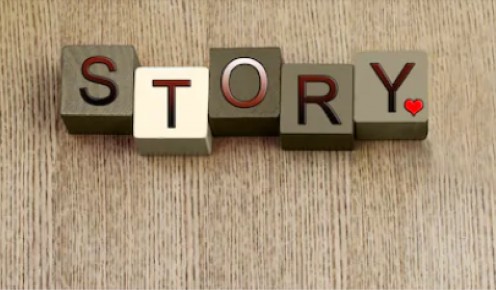
Five Key Considerations for Adapting a Novel to Film
1. Consider your audience. When you are turning a novel into a screenplay, the first thing to keep in mind is that movies, in order to be successful at the box office, must put moviegoers into theater seats. Any novel you consider as a possible movie adaptation must be one with the potential to appeal to millions of people. It needs to have "commercial" appeal as opposed to appealing only to a very narrow audience. The subject matter must be such that millions of people would be intrigued, and possibly affected, by the content.
2. What is the visual potency of the novel's "conflict." Early on in a screenplay, the main source of conflict must be apparent, and it must be strong. Conflict is the thing that gives a novel its "drive." Without conflict, there is no beginning, no middle, and no end, because the beginning, middle, and end must refer to the start, the midpoint, and the ending of conflicting elements. Okay. Think of it in this way. When you think of a story as having a three-act structure: A beginning, middle, and end, you know there are, basically, only three acts. So, with the three acts in mind, note that the story's conflict must be made clear to viewers of the movie before the end of the the first act.
Consider the internal conflict of the novel's main characters. What are they going through that will stir emotions in millions of people? What is the inner need, desire, or turmoil that must be confronted? After determining internal conflict, define what is the novel's primary external conflict. The most urgent external struggle is what drives the main character to have to deal with the internal struggle/conflict. It is the immediacy and the insistence of external conflict that forces the character to change and to grow; to be forced to resolve his/her internal conflict. Before the end of the second act (the middle), the main character(s) should be faced with obstacles that are so great or so numerous that we, as viewers of the movie, cannot imagine anyone overcoming them. Still, instead of walking away from the challenges facing him or her, as most people would, the characters in the story don't give up. And that's what makes them "larger than life," and that's what makes the rest of us care about them and want to see how things work out for them as we eagerly watch the rest of the movie.
Characters must have challenging choices to make, and they must make them, and the choices they make must have consequences. Moviegoers will love or hate characters based on the choices they make. In the movie "Forest Gump," the main character's innocence and integrity made the making of choices simple, from the main character's point of view. Life's choices were always simple, because the character's outlook on life was based not just on his mental innocence, but also on his integrity. Nothing was ever complicated for Forest, because he tried to always do the right thing. And that made even tough decisions simple. And that's why people loved him. Deep down, we all wished life could be that simple for us too.

3. Consider other elements of the novel's "visual" potential. As you are turning your (or someone else's) novel into a screenplay, keep in mind that movies need lots of interesting and exciting visual elements that can be put into motion. They need many different scenes that can tell the story by moving it along at a good pace. Nothing has to be blown up in every scene, but the visual elements need to have interest and intrigue, and they need to move the story along well. After reading a novel that you are considering adapting to film, think about how the different scenes it contains might look on the big screen. Does it have provocative, stirring visual content? Are there "scenes" in the book that would make inspiring, exciting, interesting, intriguing, or emotional visual images?
Remember that films thrive on movement; they require stimulating visual elements. If a novel does not provide enough of what film needs, then it's possible that the novel might not make a good movie. Novels can go into a character's mind in an engaging and ponderous manner, and even spend pages and pages inside a memory or focus on a person sitting for hours doing nothing but thinking. But motion pictures need to focus on things happening, on motion, on what is happening to a character in the moment. Something has to be happening in a scene, if you intend to turn a scene from the novel into a scene in a movie.
4. Consider the main characters of the story, and the theme that links characters and plot. A theme connecting the plot and the main characters will help structure the story that is being told. Books and movies are driven either by plot or by characters. I believe the best movies and the best books are those that are character-driven; those where characters drive the plot, rather than the other way around. Why? Because people (both readers and moviegoers) identify with other people.
Although plot (what happens to characters) can be exciting, we only care about it because we care about the people who are affected by it. For this reason, it is important for the main characters (both the protagonist--the hero/heroine, and the antagonist--the bad guy) to be realistic people with flaws and weaknesses that get in the way, impeding their attempts to get what they want. Their flaws and weaknesses often get in the way, serving as hindrances or obstacles as they seek to resolve internal and external conflict. Strong and real characters struggling to resolve layers of conflict as plot-revealing scenes move the story along is what makes a movie riveting, interesting, and exciting.
5. Think about where the movie's story should begin. The story of a movie needs to start at a turning point for a major character. A novel has time to provide the details and nuances that can slowly add texture and sensory definition to a story, but motion pictures don't enjoy the same luxury of time. They must find that crucial and important point in the story with the potential to grab the attention and interest of viewers immediately, and they must offer this in a way that will keep eyes riveted to the screen.
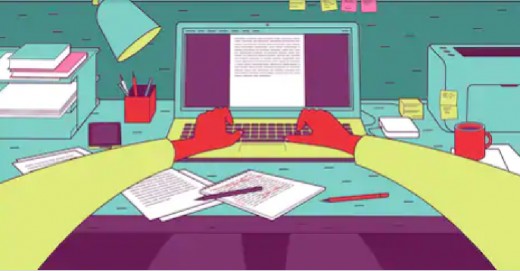
Spend Time Learning the Art and Craft of Storytelling—Writing for the Screen
I would recommend, for anyone who has not formally studied screenwriting, before attempting to write a screenplay, to take a screenwriting course or at least read a lot of how-to books on the topic. There are many things you can "learn by doing," but I believe that, based on the amount of time and effort that needs to be put into writing a screenplay, it is best to learn as much as you can before starting one. There are courses you can take online, and many colleges and universities that offer courses for beginners. I am sure that anyone who wants to learn the art and craft of writing for the screen will be far better off, and happier with the end results of their first efforts, if a good amount of time is invested in learning how-to do it, prior to beginning the writing of a screenplay.
The art (and craft) of turning a novel into a screenplay requires understanding the difference between movies and books. It requires patience, skill, and lots and lots of attention to detail, and it is not done by simply extracting the dialogue from what people say to each other in the book. Instead, it requires great understanding the difference between "showing" and "telling." Novels tell us stories, whereas motion pictures show us stories.
Writing a screenplay requires understanding that the way people talk to each other in real life is different from the way characters in a novel talk to each other. There is a difference between dialogue that is spoken—that is tailored for the ears, and dialogue that is written and that is tailored for the eyes and the mind.
Effective screenwriters understand that people perceive and process the written word in a way that is different from how they perceive and process visual images. It can take pages of the written word to describe what can be taken in at a glance, visually. Books, in other words, are not as constrained by time as are films. The average full-length film has only 90-120 minutes to condense a story that might have been told using 100,000 or 200,000 words, or more.

What Can Be Adapted?
Just about anything can be adapted to film, including comic books, comic strips, news stories, biblical scripture, stage plays, children's books, poems, historical events, biographies, autobiographies, real-life or fictional events or occurrences, and more. It's all fair game, and I'm sure you can think of many instances where one or more of the items I just mentioned have been adapted to film.
Why Adapt?
Why adapt a written work to film? Because we all love stories and storytelling, and we especially love to see stories told as movies. Those who write for the big screen are always looking for good material, which often comes in the form of a book or novel.
Those of us who write novels and who study the writing of novels already know the number of people who watch movies greatly outnumbers those who read books. That means having your book adapted to film can bring a writer a much wider audience. As someone who is now writing book six of a ten-book collection of novels (a collection I titled "Living in Color"), I would love to see any or all of my stories adapted for the big screen. Although I self-published two of my novels, (Silver: Waves of Turbulence and Gold: Fire and Refinement) using my pen name, Beax Rivers, I am now revising both novels and have become an independent publisher. Therefore, after revising, I will be reprinting/publishing my first two novels (and every subsequent novel) in my collection under my own imprint, and under my first and middle names, Sallie Beatrice, as author. I will continue using my pen name for my children's books. I have written the first six, and I have the last four "Living in Color" books already in mind, with notes on each one in various stages of completion. Although I'm writing my ten-book collection for print, because I love movies, I cannot help but imagine every scene I write as a scene in a movie.
It might never happen (then again, it might), but, for me, it's not possible not to write, and it's not possible NOT TO SEE my books as movies. It simply comes along with writing them, and I'm sure this is true for many other writers as well. And there's another good reason for writers to want to see their books adapted to film. Once a story becomes a movie, it has the potential to reach millions who might never read the book. At the same time, a movie can also inspire more people to want to read the book that inspired the movie.
© 2012 Sallie B Middlebrook PhD





